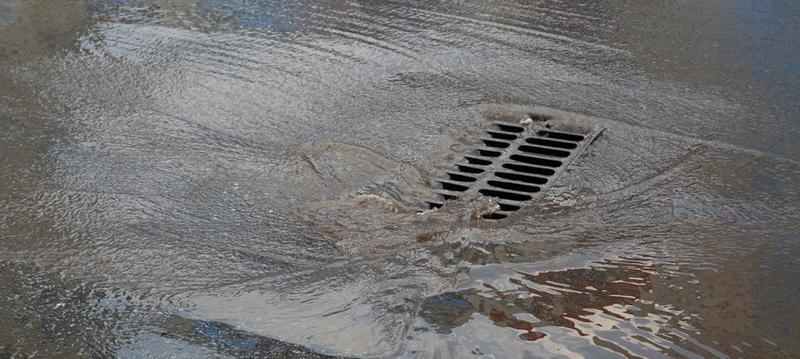This blog is the first in a two-part series regarding stormwater management regulations as discussed below and best management practices, which will be presented in our September 2nd blog post.
What Is Stormwater Runoff and What Are Its Impacts?

Stormwater runoff is rain or snowmelt that flows over land, instead of percolating into the soil. Runoff during larger storm events can be compounded by impervious surfaces, such as buildings, roads, sidewalks and parking lots. These surfaces can significantly alter the natural hydrology of the land by increasing the volume, velocity and temperature of runoff and by decreasing its infiltration capacity. Improper stormwater management can increase the volume and velocity of stormwater runoff. This can consequently lead to severe stream bank erosion, flooding, and degradation of the biological habitat of water bodies. Further, reduced infiltration can lower groundwater levels and affect drinking water supplies.
Stormwater runoff moving across surfaces picks up trash, debris, and pollutants such as sediment, oil and grease, pesticides and other toxics. Discharge of sediments and pollutants from stormwater runoff can be detrimental to the health of natural water bodies as well as humans. Soil loosened by construction activities is especially susceptible to runoff. Construction sites can contribute greater amounts of sediments to water bodies over a short period of time, than the amount of sediments that are naturally deposited over several decades. Some of the specific consequences of excess sediment deposition include:
• Reducing the amount of sunlight reaching aquatic plants
• Clogging fish gills
• Cluttering aquatic habitats and breeding areas
• Blocking navigation in waterways
Factors that Contribute to Stormwater Runoff:
• Climate: Higher intensities and/or durations of rainfall can induce a higher amount of erosion.
• Topography: Longer and steeper slopes increase the potential for erosion.
The Clean Water Act and associated federal regulations (Title 40 of the Code of Federal Regulations) require nearly all construction site operators engaged in clearing, grading, and excavating activities that disturb one acre or more, including smaller sites in a larger common plan of development or sale, to obtain coverage under a National Pollutant Discharge Elimination System (NPDES) permit for their stormwater discharges. Today, most states are authorized to implement the NPDES program and issue their own permits for stormwater discharges (State Pollution Discharge Elimination System or SPDES) associated with construction activities. Regulations associated with SPDES include the Municipal Stormwater Sewer (MS4) Program. More information on SPDES and MS4 Program can be found in Walden’s previous blogs “What is the SPDES Permit Program and its Role in Eliminating Pollution” and “Municipal Stormwater Sewer System (MS4) Annual Reports Due June 1st”.
Part Two of this blog, “Green Infrastructure Options for Stormwater Management,” will appear on August 31st.. In the meantime, if you have questions about stormwater management, contact the Walden team today at (516)-559-6979.
